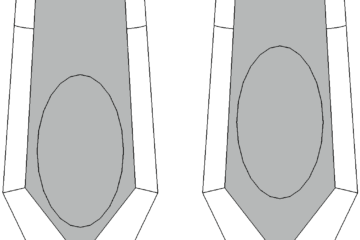Thanks to Barbarix for sending me links to the very cool German-language website, www.ultraleicht-trekking.com (ultralight trekking) and his DIY packraft and paddle posted there. My German comprehension is poor, but thanks to Google Translate, I can understand most of the posts quite well.
I know that for the majority of visitors to this site, English is not your first language, so I wonder – how many of you are using software to translate the text, and is it comprehensible? I wish that I could write and speak in all of your different languages, but I cannot. At least with translation software we can communicate.
I have been thinking about DIY paddle designs for some time, but haven’t had time to actually make any yet, so I was very pleased so see Barbarix’s design. It is very light! Check it out by clicking the link below. (I have linked to Google Translate versions in English, but if English is not your language of choice, I highly recommending downloading and installing a translation plugin for your browser.)
4-piece DIY carbon fiber paddle (pictures and description and link to a German supplier – does anyone know of a good carbon fiber supplier in North America?)
Packraft (scroll down for plans)
If anyone knows of other sources of carbon fiber tubes, sheets, and/or fabric, please leave a comment below!

2 Comments
Chris · August 19, 2016 at 6:36 am
Frankly, I think 200+ € for a diy paddle is too much money. The Supai Olo is only 357 grams, costs 180 USD. However it is only suitable for flatwater. Reviewed by Philip Werner at sectionhiker.com
http://sectionhiker.com/supai-adventure-gear-olo-packraft-paddle-review/
The much stronger Advanced Elements Ultralite is 660 grams (566 grams if you leave one middle section at home) – at only 49 USD…
http://www.advancedelements.com/accessories/paddles/?b=12935
Matt (Admin) · August 19, 2016 at 8:14 am
I agree that it’s a lot of money – I think it’s a step in the right direction, however, as it looks much stronger than either of those paddles (and the Advanced Elements appears to be available in the US only).
Alpacka stopped selling ultra-lightweight paddles some time ago, presumably because the commercially available ones aren’t reliable enough. (Even on flat water, if you have to fight a headwind, you’ll be pulling hard on your paddle.)
As with anything, it comes down to what you plan to do with your paddle, and what materials/gear you can source within your budget.